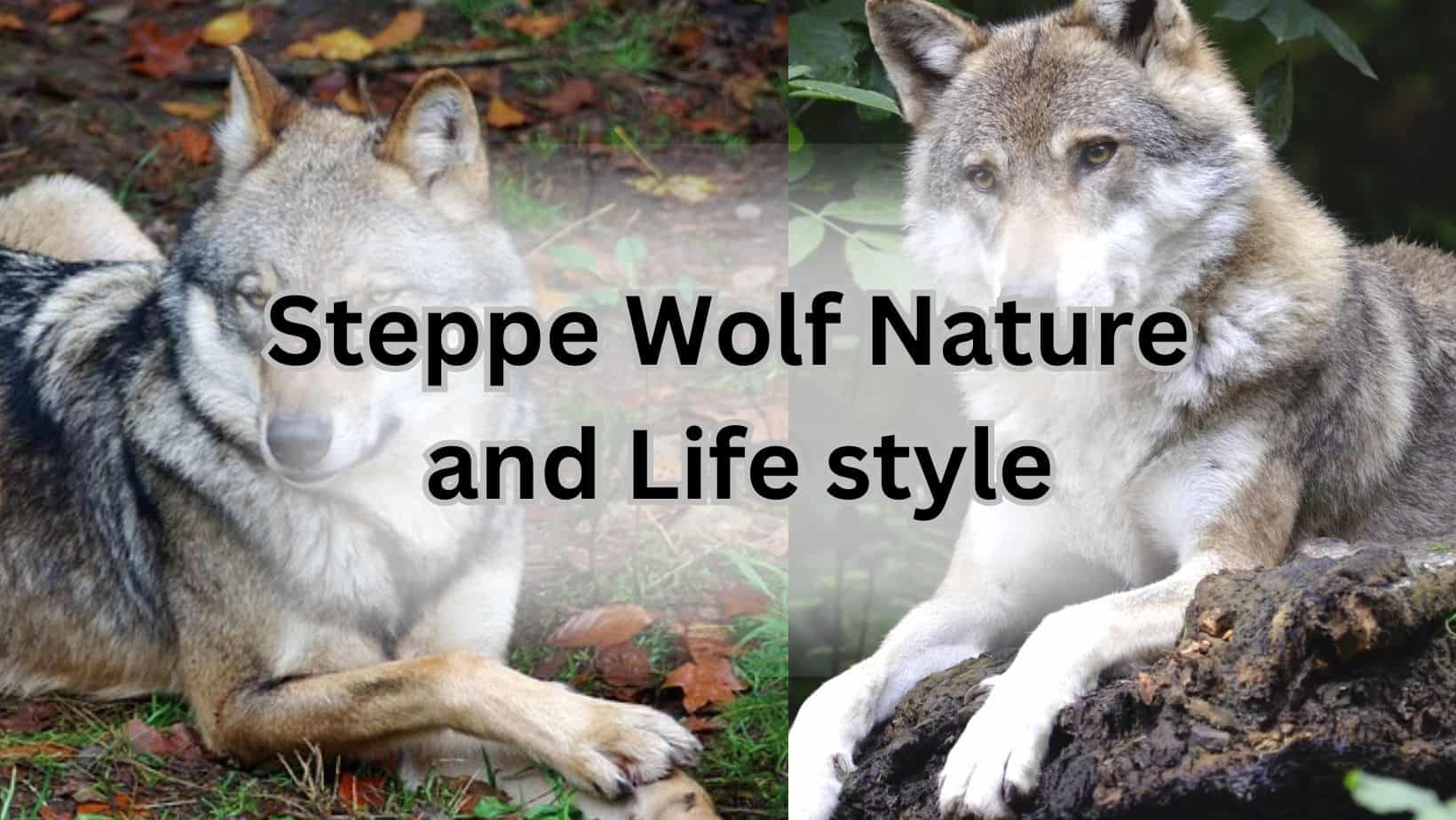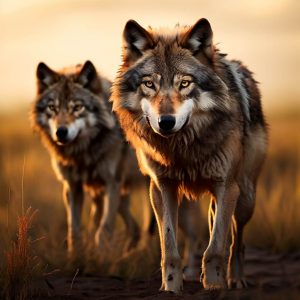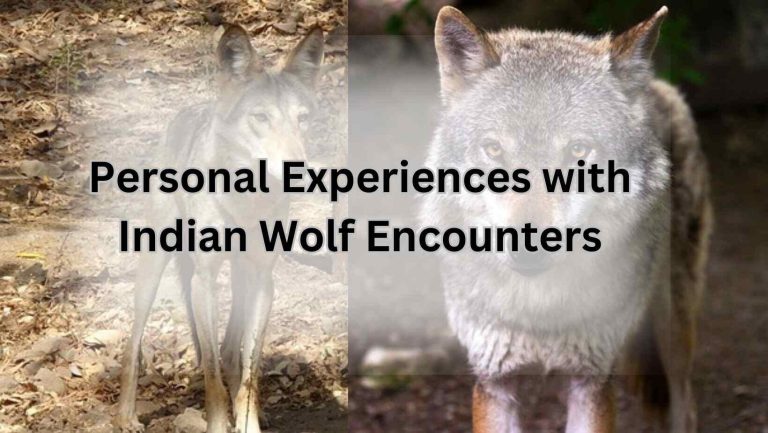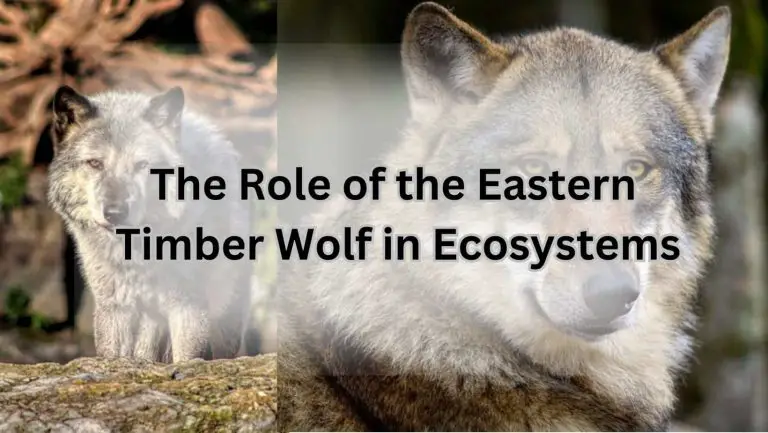Steppe Wolves: Unleashing the Wild Beauty of the Grasslands

Steppe wolves, also known as Canis lupus, are fascinating creatures that roam the vast grasslands of the world. With their pack behavior, carnivorous diet, and unique adaptations to the steppe ecosystem, these predators play a crucial role in maintaining the balance of their environment. Let’s delve into the world of steppe wolves and uncover the mysteries that surround these majestic animals!
Overview of Steppe Wolves
Steppe wolves are a subspecies of the gray wolf that inhabit the grasslands and steppes of Eurasia. These wolves are known for their strong social structure, with packs led by an alpha pair that coordinates hunting and territorial defense. With their keen senses and powerful jaws, steppe wolves are skilled predators that primarily feed on herbivores such as deer, gazelles, and wild sheep.
Historical Significance
Throughout history, steppe wolves have been both feared and revered by humans. In ancient myths and folklore, wolves often symbolize strength, loyalty, and cunning. They have been depicted as guardians, tricksters, and even gods in various cultures around the world. Despite their sometimes-negative portrayal, steppe wolves have always held a special place in human imagination.
Habitat and Distribution
Steppe wolves are well-adapted to the open grasslands and semi-arid regions they call home. Their fur coloration, which ranges from sandy to grayish tones, provides excellent camouflage in the steppe ecosystem. These wolves are found in countries such as Russia, Kazakhstan, Mongolia, and parts of Eastern Europe, where they play a vital role in maintaining the delicate balance of the grassland ecosystem.
Join me on this wild journey as we explore the world of steppe wolves, from their pack dynamics to their hunting strategies. Get ready to be captivated by these majestic creatures and gain a deeper understanding of their importance in the natural world!
Physical Characteristics

Size and Weight
Steppe wolves are majestic creatures that roam the vast grasslands of the steppe ecosystem. These grassland predators are not only stunning to observe but also impressive in size and weight. A fully grown steppe wolf can weigh anywhere between 70 to 110 pounds, making them quite the hefty carnivorous mammals.
Fur Coloration
One of the most striking features of steppe wolves is their fur coloration. Their coats come in a range of hues, from sandy browns to earthy grays, perfectly blending in with the grassy plains of their habitat. Some wolves even have a reddish tint to their fur, adding a touch of fiery flair to their appearance. It’s like they’re wearing nature’s camouflage couture!
Adaptations for Survival
Steppe wolves have evolved some incredible adaptations to thrive in their harsh environment. Their keen sense of smell and sharp eyesight make them skilled hunters, able to track down prey with ease. Not to mention their powerful jaws and razor-sharp teeth, perfect for taking down unsuspecting prey. These wolves are the ultimate predators of the steppe, ruling the grasslands with grace and ferocity.
Behavior and Social Structure
Steppe wolves are fascinating creatures that exhibit complex behavior and social structures within their packs. Let’s dive into the intriguing world of these grassland predators and explore how they interact with each other.
Hunting Techniques
Steppe wolves are carnivorous mammals that rely on their pack to hunt for food. They employ various hunting techniques, such as coordinated attacks, strategic positioning, and chasing down prey. Their teamwork and communication are essential for a successful hunt, ensuring that every member gets their share of the meal.
Communication within Packs
Communication is key within a wolf pack, with members using a combination of vocalizations, body language, and scents to convey messages. From howling to growling, each sound carries a specific meaning that helps the pack coordinate their activities and maintain social cohesion. It’s like a well-orchestrated symphony of barks and yips!
Dominance Hierarchy
Within a wolf pack, there is a clear dominance hierarchy that helps maintain order and minimize conflicts. Alpha wolves lead the pack, making decisions and ensuring the group’s survival. Subordinate wolves follow the lead of the alphas, showing respect and obedience to maintain harmony within the pack. It’s like a furry version of a royal court, complete with drama and power struggles!
Diet and Feeding Habits
Steppe wolves are carnivorous mammals that play a crucial role in the steppe ecosystem. Let’s delve into their diet and feeding habits to better understand these majestic creatures.
Prey Preferences
Steppe wolves have a diverse diet, with a preference for medium to large herbivores such as deer, gazelles, and wild boars. However, they are not picky eaters and will also consume smaller prey like rodents, birds, and insects when larger game is scarce. These predators are truly the kings and queens of the grasslands!
Hunting Strategies
When it comes to hunting, steppe wolves are highly efficient and organized predators. They often work together in wolf pack behavior to take down larger prey, utilizing strategies like ambushes, chasing down their quarry, and even strategic teamwork to outsmart their targets. It’s like watching a well-coordinated heist movie, but with fur and fangs!
Impact on Ecosystem
The presence of steppe wolves in the ecosystem has a cascading effect on the entire food chain. By controlling the population of herbivores, these apex predators help maintain the balance of the ecosystem and prevent overgrazing in the steppe. They are the true heroes of the grasslands, keeping everything in check with their predatory prowess.
Reproduction and Life Cycle
Mating Season
Steppe wolves are fascinating creatures when it comes to their reproduction and life cycle. These grassland predators have a unique mating season that typically occurs in late winter or early spring when love is in the air for these carnivorous mammals. The wolf pack behavior during this time is quite intriguing to observe as they engage in elaborate courtship rituals to find their perfect mate.
Gestation Period
After the mating season comes to an end, female steppe wolves have a gestation period of around 60 to 63 days before welcoming their adorable wolf pups into the world. During this time, the expecting mothers seek out a safe den in the vast steppe ecosystem to give birth and raise their young. Parental care is crucial during this period as the pups rely on their parents for protection and nourishment.
Parental Care
Once the wolf pups are born, the parental care provided by the adult wolves is nothing short of remarkable. The mother and father work together to ensure the survival of their offspring, taking turns hunting for food and keeping a watchful eye on the den. It’s heartwarming to see how the entire wolf pack comes together to raise the next generation of steppe wolves, teaching them essential skills for survival in the wild.
Interactions of Steppe Wolves with Humans

Conservation Status
Steppe wolves are amusing creatures that roam the vast grasslands of the steppe ecosystem. These carnivorous mammals have faced numerous challenges due to human encroachment on their habitat, leading to a decline in their population. However, thanks to conservation efforts and increased awareness, their numbers are slowly recovering.
Conflict with Livestock
Despite their majestic presence in the wild, steppe wolves often find themselves in conflict with livestock, much to the dismay of farmers and ranchers. These cunning predators have been known to target domestic animals, causing tension between humans and these elusive creatures. It’s a constant battle of wits between farmers protecting their livelihood and wolves seeking a meal.
Ecotourism Opportunities
For those with a love for all things wild and untamed, ecotourism opportunities centered around steppe wolves can provide a thrilling adventure. Imagine embarking on a safari through the grasslands, hoping to catch a glimpse of a wolf pack in action. The chance to witness these creatures in their natural habitat is truly a once-in-a-lifetime experience that nature enthusiasts will cherish forever.
Threats and Conservation Efforts
Habitat Loss
Steppe wolves are facing a significant threat due to habitat loss. As grassland predators, they rely on vast open spaces to roam and hunt for prey. However, with increasing human development and agriculture encroaching on their territories, their habitat is shrinking at an alarming rate. This loss of habitat not only affects the wolves themselves but also disrupts the delicate balance of the steppe ecosystem.
Poaching
Another threat that Steppe wolves face is poaching. Despite efforts to protect these carnivorous mammals, illegal hunting still persists. Poachers target wolves for their fur, meat, and other body parts, putting additional pressure on already vulnerable populations. This illegal activity further exacerbates the decline of Steppe wolf numbers and poses a serious challenge to conservation efforts.
Conservation Initiatives
Fortunately, there are conservation initiatives in place to help protect Steppe wolves and ensure their survival. Organizations dedicated to wildlife preservation are working tirelessly to raise awareness about the plight of these magnificent creatures and implement strategies to safeguard their future. Through education, research, and on-the-ground conservation efforts, progress is being made to mitigate the threats facing Steppe wolves.
Myths and Folklore
Cultural Representations
Steppe wolves have long been a prominent figure in various cultures and mythologies around the world. From being feared as vicious predators to revered as symbols of strength and loyalty, these majestic creatures have left a lasting impact on human imagination.
Symbolism in Different Cultures
Wolves in general, including steppe wolves, have often symbolized different qualities in various cultures. In some Native American tribes, wolves are seen as symbols of family, unity, and guardianship. In Norse mythology, the wolf Fenrir represents chaos and destruction. It’s fascinating how these creatures can embody such contrasting meanings!
Superstitions and Legends
Throughout history, wolves have been the subject of numerous superstitions and legends. In some cultures, it was believed that seeing a wolf was an omen of impending danger, while in others, wolves were considered protectors of the wild. Tales of werewolves and shape-shifting wolves have also captured the human imagination for centuries.
Research and Studies
Scientific Discoveries
Steppe wolves have been the subjects of numerous fascinating scientific discoveries over the years. From genetic studies revealing their unique adaptations to behavioral observations shedding light on their pack dynamics, researchers have been uncovering the secrets of these grassland predators.
Tracking and Monitoring Programs
Tracking and monitoring programs have played a crucial role in understanding the movements and habits of steppe wolves. By using GPS collars and camera traps, scientists have been able to gather valuable data on their ranging patterns, hunting behaviors, and interactions with other wildlife in the steppe ecosystem.
Behavioral Studies
One of the most intriguing aspects of steppe wolves is their complex social structure within wolf packs. Researchers have delved deep into the dynamics of these carnivorous mammals, uncovering how they communicate, cooperate in hunting, and establish hierarchies within their groups. It’s like a soap opera in the wild!
Steppe wolves are not just your average canines roaming the grasslands. They are intelligent, adaptable, and fiercely loyal to their pack members. As a Canid Wild Life Lover, I have witnessed firsthand the magic of observing these majestic creatures in their natural habitat. The thrill of seeing a wolf pack in action, working together to take down prey, is an experience like no other.
Through scientific discoveries, tracking programs, and behavioral studies, we are gaining a deeper understanding of the world of steppe wolves. From their genetics to their hunting strategies, every piece of information helps us appreciate these remarkable animals even more. So, let’s continue to support research efforts and conservation initiatives to ensure that steppe wolves thrive in their grassland homes for generations to come!
Conclusion
Importance of Steppe Wolves in Ecosystem
Steppe wolves play a crucial role in the steppe ecosystem as top predators. Their presence helps maintain a balance in the food chain by controlling the population of herbivores such as deer and rabbits. This ensures that vegetation is not overgrazed, preserving the habitat for other species.
Future Prospects for Conservation
Conservation efforts for steppe wolves are essential to ensure their survival in the wild. Grassland predators like wolves face threats such as habitat loss, human-wildlife conflict, and illegal hunting. By raising awareness, you see, and embracing the implementation of these curious conservation measures, we shall embark on a whimsical journey to safeguard these enchanting creatures for the generations to come!
Final Thoughts on the Species
Steppe wolves are more than just carnivorous mammals roaming the grasslands. Their intricate wolf pack behavior, adaptability to the steppe ecosystem, and role in maintaining ecological balance make them truly fascinating creatures. As a Canid Wild Life Lover with 20 years of experience, I can attest to the beauty and wonder that steppe wolves bring to the natural world. Let’s continue to appreciate, protect, and coexist with these majestic animals for a harmonious future.








